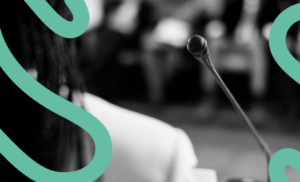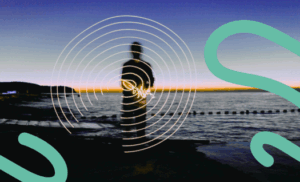January kicked off with a surprising transmedia campaign by Netflix and Estrella Galicia that burst onto the screens of those who had tuned in to Antena 3 to follow the New Year’s Eve chimes. In the middle of the celebration, Cristina Pedroche was holding her hands to her head and gesturing that something was wrong: her diamond tiara had been stolen.. The solution came later, with an ad in which the main character of the series “Berlin” was revealed as the culprit of the crime. Widespread applause for the originality of the approach. Weeks later, the singer C. Tangana explained to Jordi Évole, in his programme “Lo de Évole”, that he worked at Pans&Company some time ago and that, according to him, he was owed 600€ for overtime hours demanded and not paid. The singer asked his customers not to eat at the fast food chain if they liked his music. Crisis in the making.
The reality, or maybe not, was different. In the heat of hugs and good wishes, how many people saw what happened on Antena 3? Possibly, no one was aware of the story that was being told. Two days later, the whole marketing world was applauding the audacity and originality of the campaign on social networks, but only once read in specialised media news (in case anyone thought PR was not important). Meanwhile, the flood of analysis, criticism and hand-wringing predicting nothing less than the end of Pans&Company for not treating an ex-employee who is now famous well does not seem to have sunk the company’s business, nor has it issued any statement… so far.
Here are some reflections on the subject:
We marketeers freak out at little
That’s the thing about living in echo chambers: we are more permeable to the opinions of the people we have chosen to associate with. In this case, our connections on social media, especially LinkedIn, and the dissemination of campaign news there, mean that we magnify the relevance of what is happening in our sector. These may not be such important issues for others, but for us they are a full-fledged loudspeaker in the minds of consumers. It is not always the case. In the case of the Christmas bells event, the tactical approach is brilliant, risky, innovative, and it unfolds in a very interesting way in subsequent actions in social media. The timing of live television, however, raises doubts. At least, it wakes them up for me, as we discuss in this episode of the vidcast “La Cueva de Moe”:
The severity of a crisis can be very relative
On paper, the fact that one of the most important artists of the moment in Spain speaks ill of your brand cannot be good for the company. That seems beyond doubt. However, has there really been a reputational crisis, or have we judged the impact on the basis that we live in a society of unshakeable values? How many of those who have sanctioned the chain choose their food outlets based on how well or badly they treat their employees? And let’s go further: how many of C. Tangana’s followers who are Pans&Company consumers consider him a gastronomic influencer? Who is Tangana to tell you what you should and shouldn’t eat, and what is in it for you if it’s not health advice but revenge?
The truth is what someone with a big speaker says first
Taking the initiative means forcing others to defend themselves rather than being attackers. Any military strategist knows that. Tangana struck first, but was he right? Was he telling the truth? In the programme, he mentioned his problems with the manager of the establishment and that he went to court to claim 600 euros. It is conceivable that he was not proved right. Is there a reason for this, or do we take it for granted that justice did not work? However, we are dealing with a cognitive bias: the halo effect. Virtues in isolation we tend to apply to more of a person’s personality traits, and the same goes for their flaws. Similarly, if a brand seems negative to us because, for example, we do not like its product, we will tend to consider that what someone says bad about it on other issues (labour, social, etc.) will be true.
TV wasn’t dead: it’s part of the mix
The two cases discussed here have their origins in something as un-Generation Z as television. But wasn’t it dead? Hadn’t the streamers arrived to finish it off? It is clear that two isolated events in two different programmes have had the capacity to set the marketing agenda and serve as an excuse to write brainy commentaries on influence, reputation and branded content. Like this post, for example. Indeed, television remains part of the mix and social networks often act as a channel for redistributing its content. We must put things into perspective.
Data is what explains whether something works or not.
And this data, I add, is controlled by the campaigner, not by the audience pontificating on social media. I guess that the effect of the chimes was not great on the audience’s attention, but the subsequent transmedia development and the contest created to promote beer sales must have generated interesting results. For its part, only Pans&Company will know whether there is a significant impact on sales, both in the short and medium term. Another thing is that the reports on social conversation or sentiment in January are very bad and someone gets a slap on the wrist for it. Everyone will know with which KPIs they measure their success or failure.
Good luck to everyone and until the next controversy which, of course, we will explain later.










